PPF Thickness Explained: Which Should You Choose?
- Fabian

- Sep 23
- 5 min read
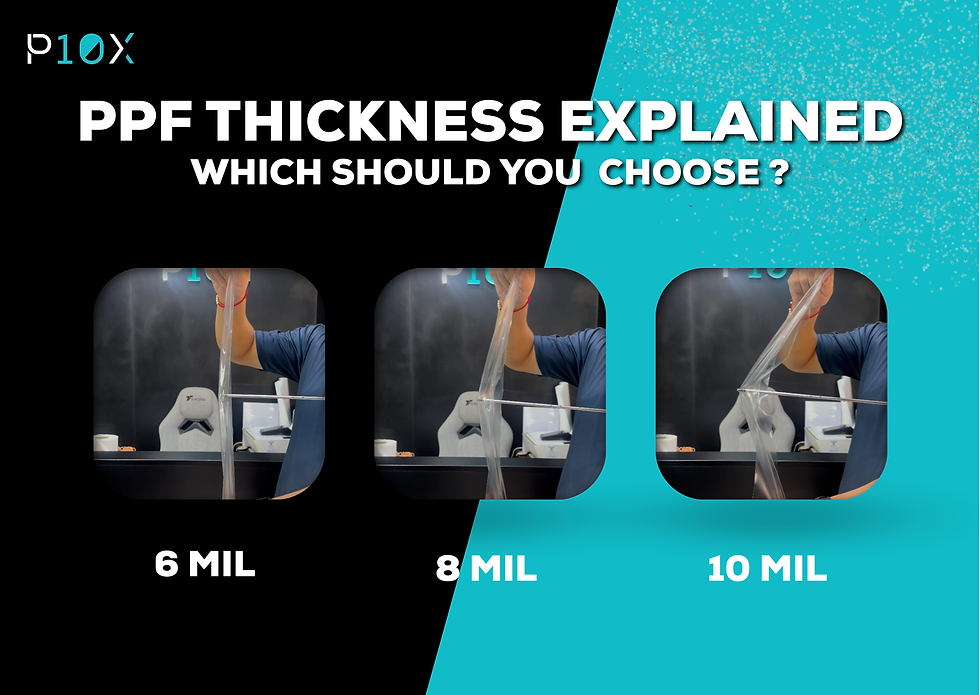
When it comes to protecting your car’s paint, Paint Protection Film (PPF) is one of the smartest investments you can make. But there’s one question we often get from car owners: “What’s the best PPF thickness for my car?” From stone chips on the highway to tight city parking scratches, the thickness of your PPF wrap plays a role in how well it performs.
But it’s not just about going thicker. If you're reading a PPF Malaysia Guide, comparing PPF vs Vinyl Wrap, or debating PPF vs Ceramic Coating, you'll quickly learn that there’s more to it than just thickness. Factors like PPF Film Types, PPF Cost Malaysia, and even knowing whether Is PPF Worth It for your specific car all matter. And of course, choosing the Best PPF Film Malaysia can make all the difference in durability, clarity, and long-term satisfaction.
Table of Content
How PPF Thickness Is Measured & Why It Matters
You’ve probably heard terms like 8mil or 10mil tossed around when discussing PPF film thickness. But what do they actually mean?
What Is a "Mil" in PPF?
"Mil" is a unit of measurement commonly used in the PPF industry.
1 mil = 0.001 inch, or about 0.0254 mm.
So, an 8mil PPF is approximately 0.2mm thick.
Why Does Thickness Matter?
PPF thickness impacts:
Impact resistance (e.g., stone chips)
Flexibility during installation (especially on curved surfaces)
Durability over time
Thicker isn’t always better it’s about matching the right thickness to your car, your driving habits, and your expectations.
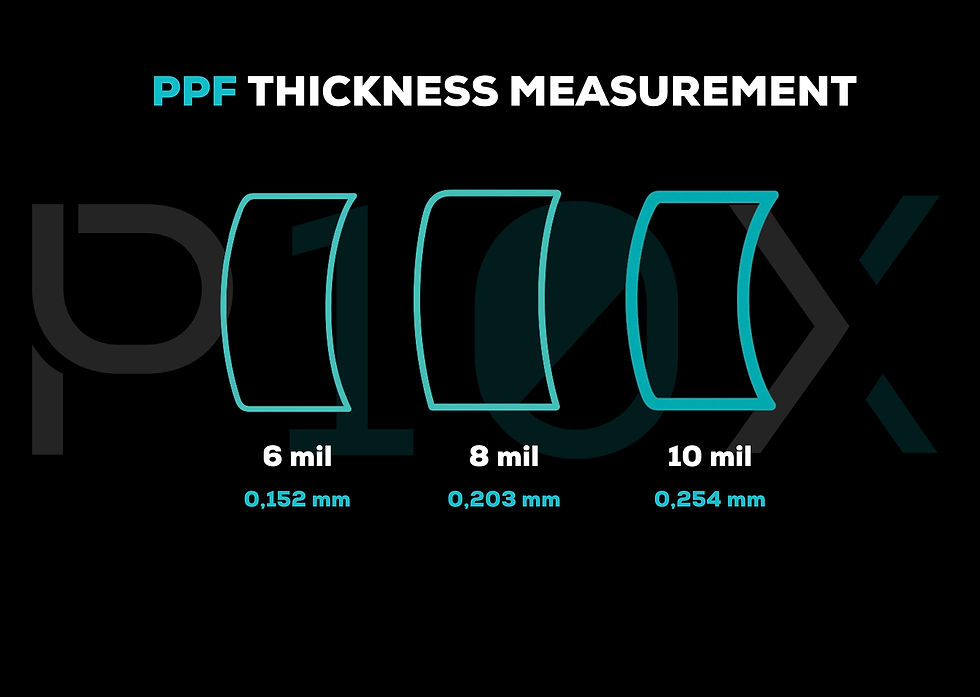
What Thickness Options Does P10X Offer?
At P10X, we offer 7.5mil to 10mil films depending on your car's needs, location of installation, and budget. Whether you want extra durability or something easier to maintain, we’ve got options tailored to you.
Common PPF Thickness Options Compared
Here’s a quick comparison to help you visualize what you're getting with each thickness:
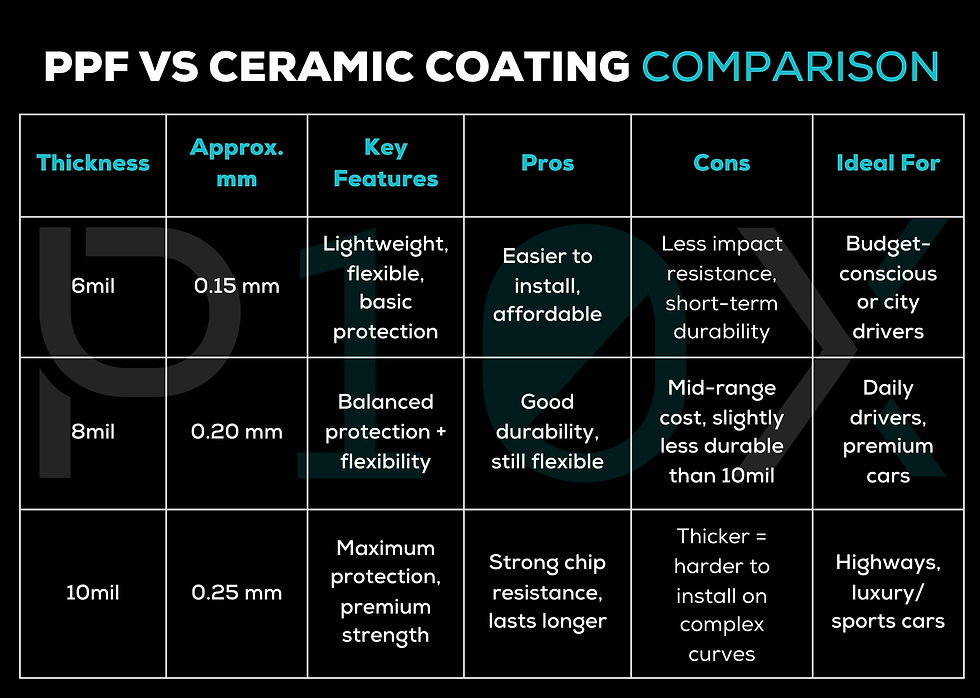
PPF isn't just about thickness. Material quality (TPU vs PVC), adhesive strength, and installation technique matter just as much.
Factors to Consider When Choosing the Right Thickness
Every car and driver is different. Here’s what to keep in mind:
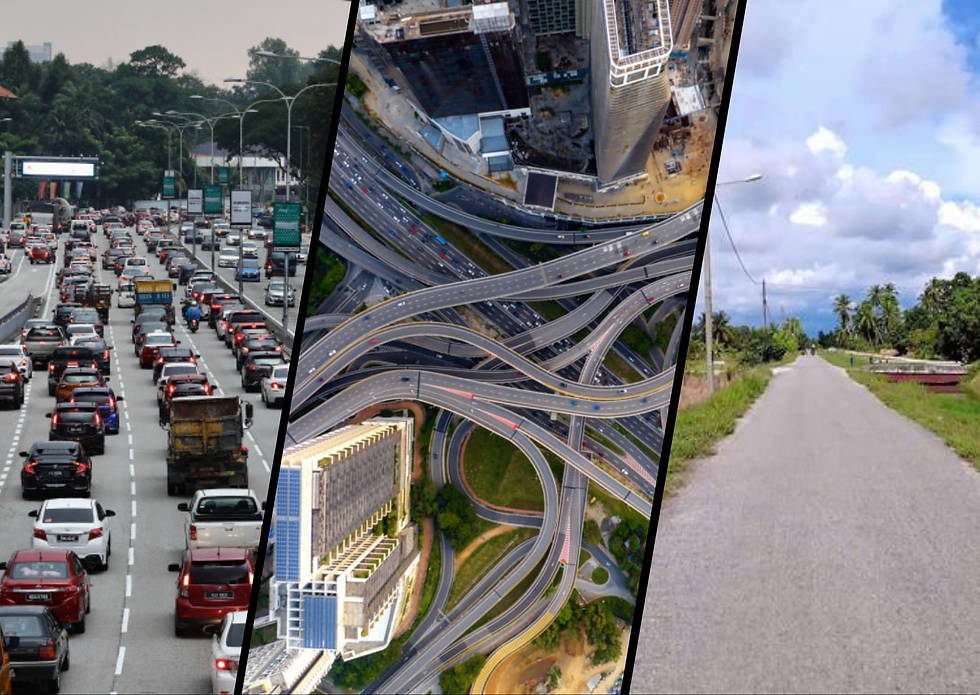
Malaysian Driving Conditions
City driving = more risk of scratches, minor impacts, and motorbike brushes.
Highways = greater risk of stone chips at high speeds.
Rural roads = dust, gravel, and harsher environmental exposure.
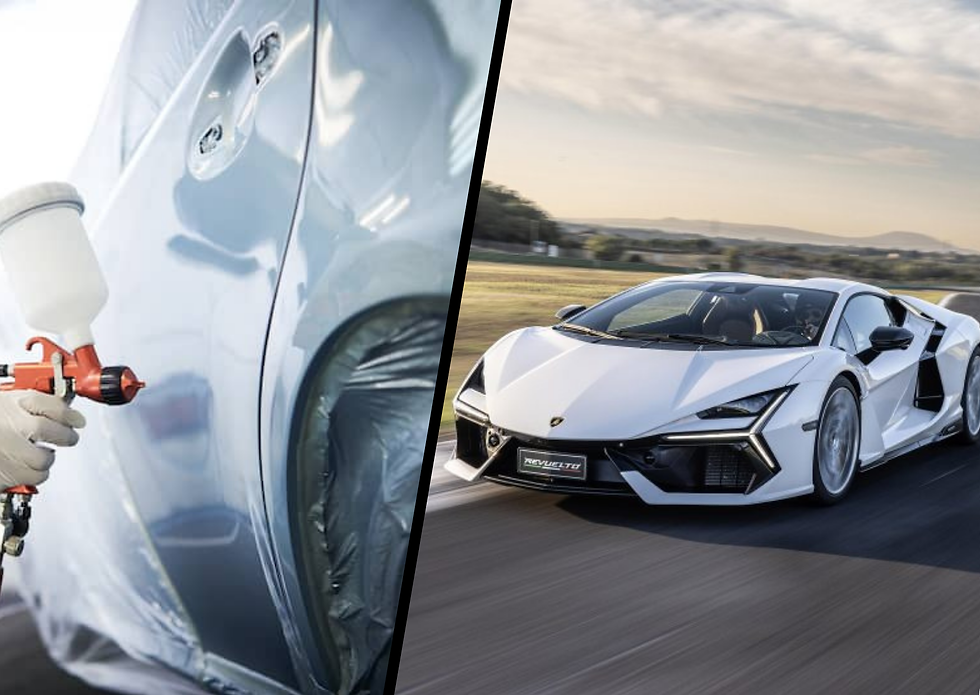
Car Type & Paint Sensitivity
Luxury or repainted cars may need more careful handling with optimal thickness (not too thin, not overly thick).
Sports cars with aggressive curves need flexible films—too thick, and it may lift at the edges.

Budget vs Longevity
Thicker = more expensive, longer-lasting
Thinner = more flexible, cheaper, but may wear out faster
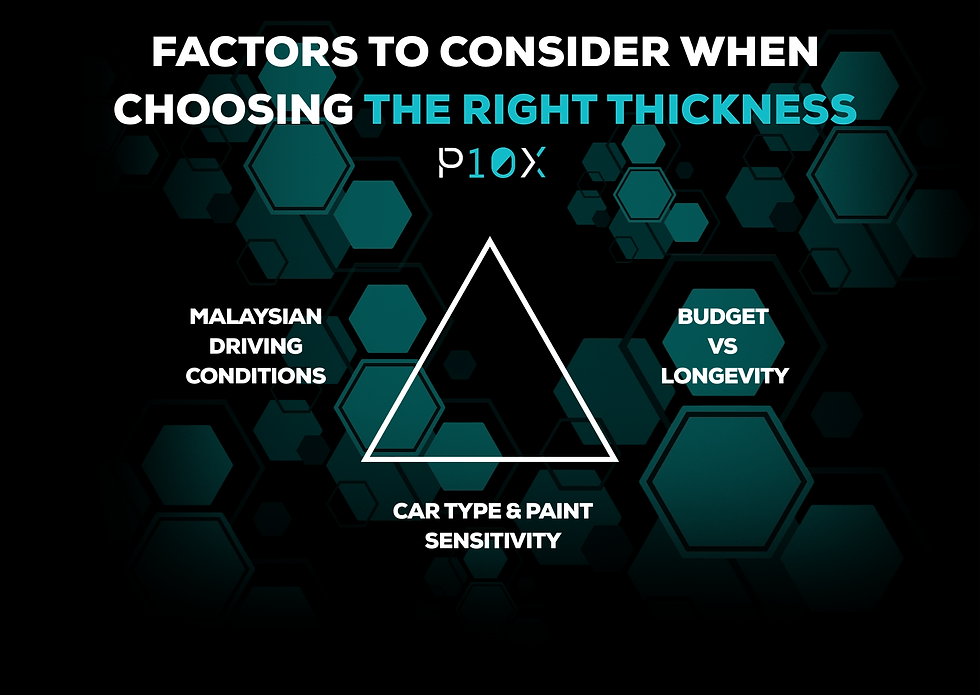
At P10X, we recommend:
8mil for balanced city and highway use
10mil for high-end vehicles or aggressive road conditions
Custom hybrid solutions for drivers who want targeted protection on vulnerable zones
What Are the Recommended PPF Thickness for Different Areas of Your Car?
Different parts of your vehicle deal with different levels of abuse. Here's a quick guide:
Front Bumper / Hood / Side Mirrors → 8–10mil (High-impact zones that face stone chips and road debris)
Doors / Side Panels → 7.5–8mil (Protection against shopping carts, door dings)
Roof / Trunk / Rear Bumper → 6–8mil (Lower risk, better flexibility and ease of install)
Headlights → Specialized films (6–8mil) (Ensure UV-resistant and optically clear PPF is used)

Myths & Misconceptions About PPF Thickness
Let's clear up some common misunderstandings:
Thicker PPF Always Means Better Protection
Not always true. Overly thick film may struggle on curves and cause lifting if not installed properly.
All PPF Brands Perform the Same
Nope. Cheap PVC or TPH films yellow, crack, and peel faster than premium TPU-based films like the ones we use at P10X.
Darker Films Protect More
Darkness affects looks, not strength. It's about the film's construction, not the shade. Although there are Colored PPF. It doesn't change the facts that it depend on the Quality and thickness of the film no matter it clear, darker or Colored Film.
At P10X, we assess your needs and don’t just upsell the thickest (and most expensive) option. You get honest advice based on experience, not sales targets.
P10X Car Specialists Offer Smarter PPF Protection Beyond Just Thickness
When you choose P10X, you’re not just picking a film, you’re getting a full protection strategy backed by experience.
Here’s what sets us apart:
14+ years of experience, with SLDN-certified installers
Live-feed transparency , you see what happens to your car
Custom recommendations based on :
Car type
Driving style
Road exposure
Budget
We teach customers that “thicker isn’t always better”
Focus on TPU quality, adhesive technology, and expert application
Flexible options from 7.5mil to 10mil, not one-size-fits-all
Tailored packages with honest consultations
Conclusion
So, what’s the best PPF thickness? It depends on you — your car, your daily roads, and your long-term goals. While 10mil might sound impressive, a high-quality 8mil film installed professionally can often outperform a cheap 10mil roll from an unknown brand.
The key? Choose a trusted installer who understands the science and art of car paint protection—not just a number on a spec sheet.
Ready to protect your car the smart way? Reach out to the specialists at P10X for a personalized PPF thickness recommendation that actually fits your lifestyle.
FAQ
Is 12mil PPF worth it for daily cars?
Not usually. It’s often too thick for complex curves and unnecessary for standard city use. We recommend 8–10mil for most daily drivers.
Does a thicker PPF yellow or peel faster?
No. Yellowing and peeling are more related to material type (TPU vs TPH) and installation quality, not just thickness.
How long does 8mil vs 10mil PPF last?
Both can last 5–10 years with proper care. 10mil may offer slightly more durability in high-impact zones, but installation and film quality matter more.
Is thicker PPF harder to install?
Yes. Thicker films require more skill and experience, especially on curved surfaces. Improper installation can lead to lifting or bubbling.
Will a very thick PPF make my car harder to wash or maintain?
Not significantly, but thicker films may have more visible edges or be slightly less hydrophobic unless coated. Routine maintenance is still easy with the right aftercare.
About The Author

Fabian
He is passionate about revolutionizing the car protection services industry by bringing innovation and transparency to a traditionally opaque and often misunderstood field. His mission is to educate end users on the true benefits and importance of car protection, aiming to replace outdated practices with honest, customer-focused solutions.
With a fresh approach to car tinting, paint protection film (PPF), and detailing services, he is committed to delivering a superior customer experience that sets a new standard in the market. He welcomes discussions about the future of the automotive industry and is eager to connect with like-minded professionals who share his vision for innovation, integrity, and excellence.





Comments